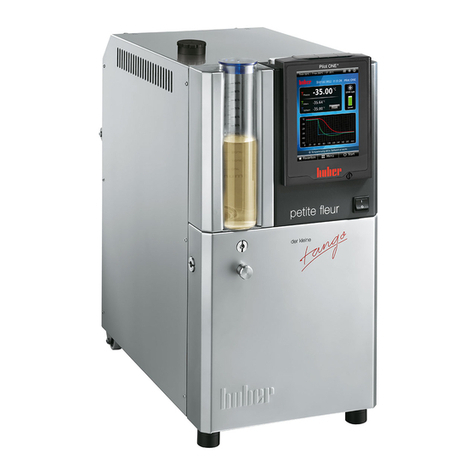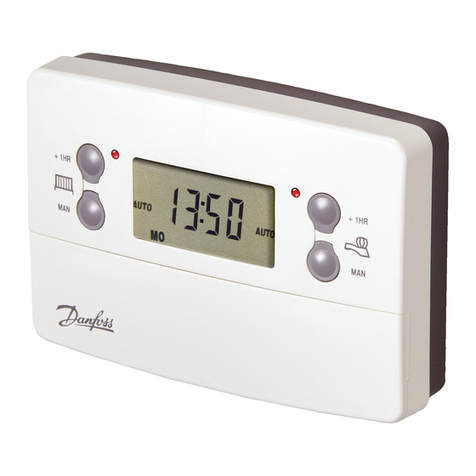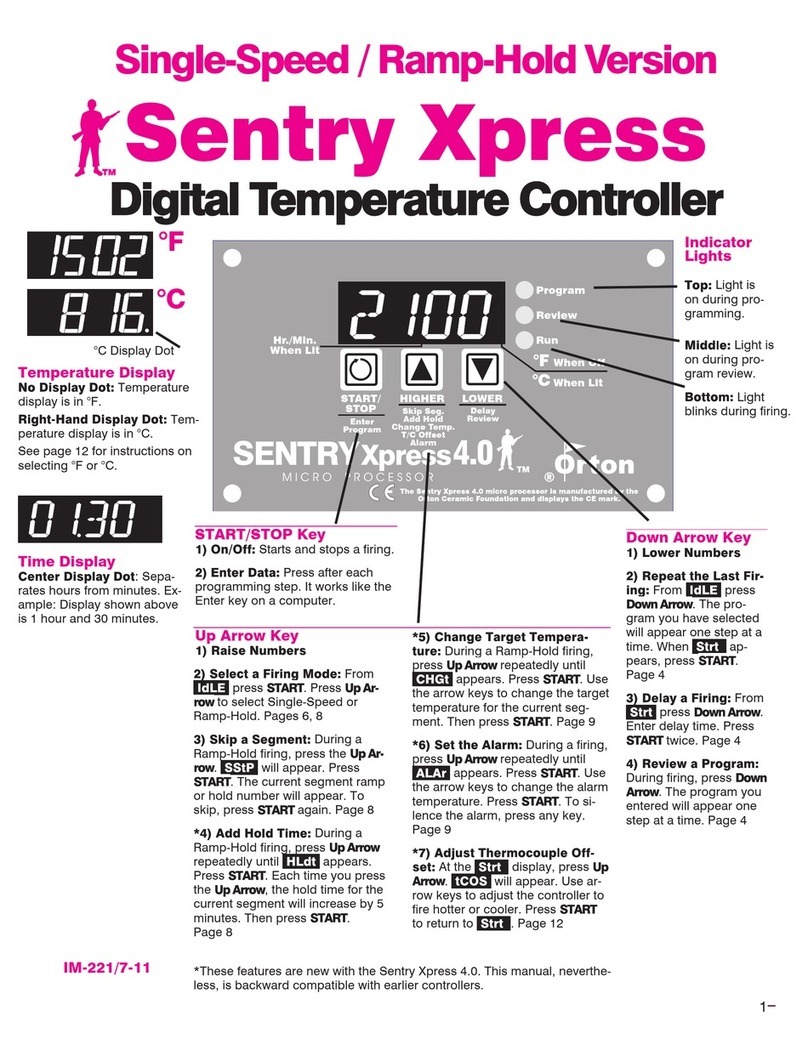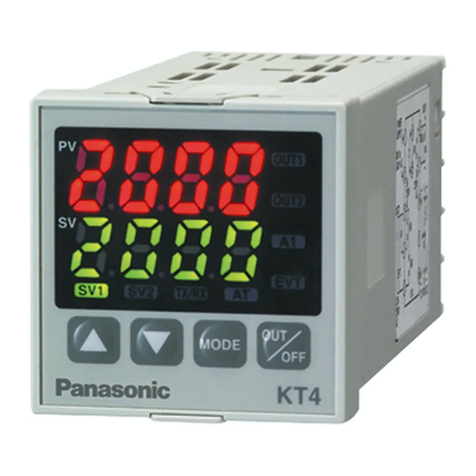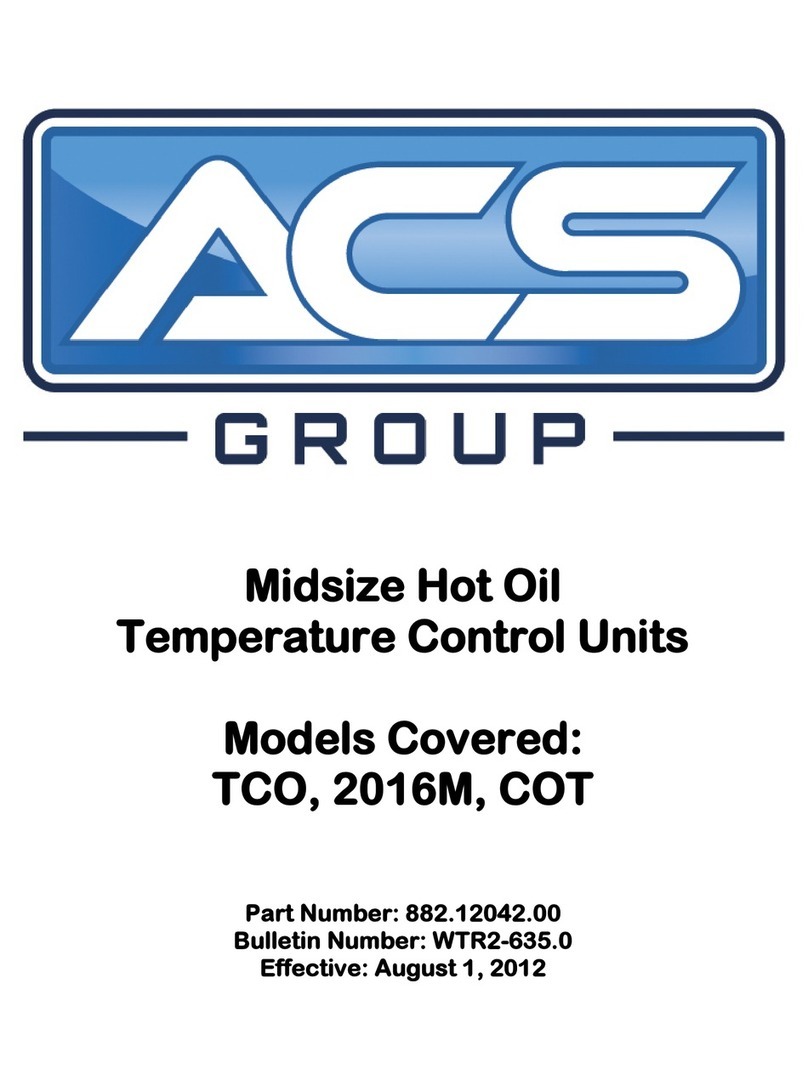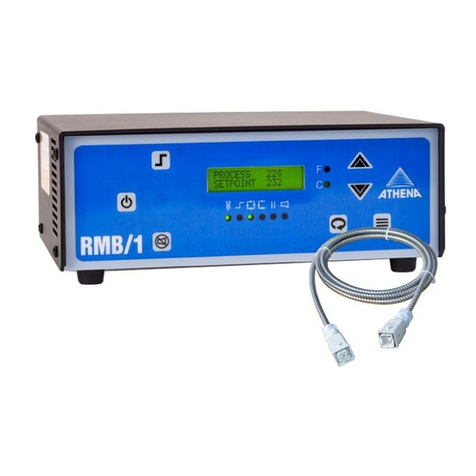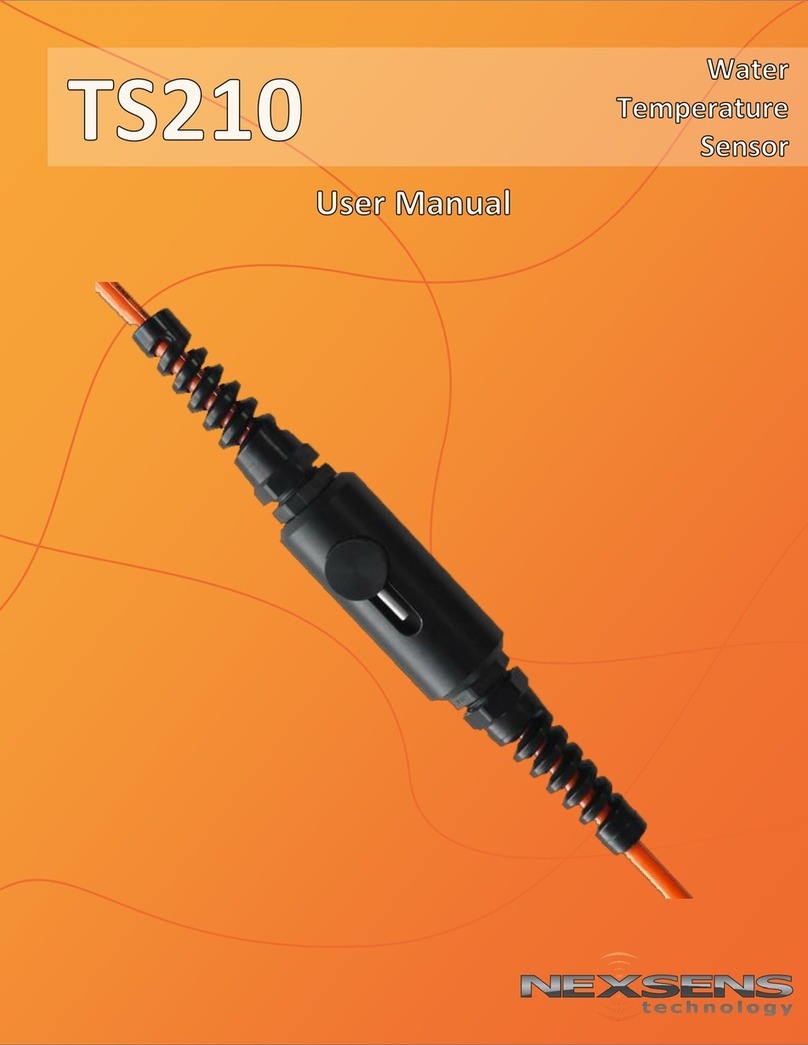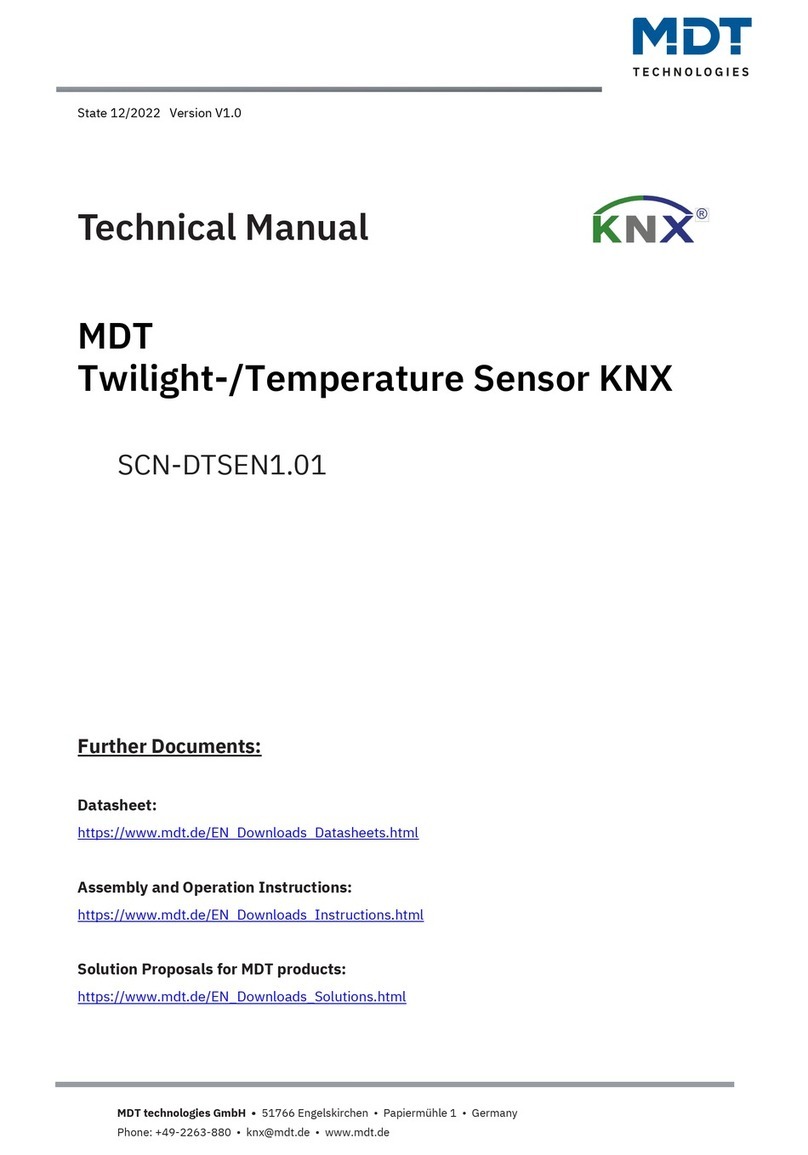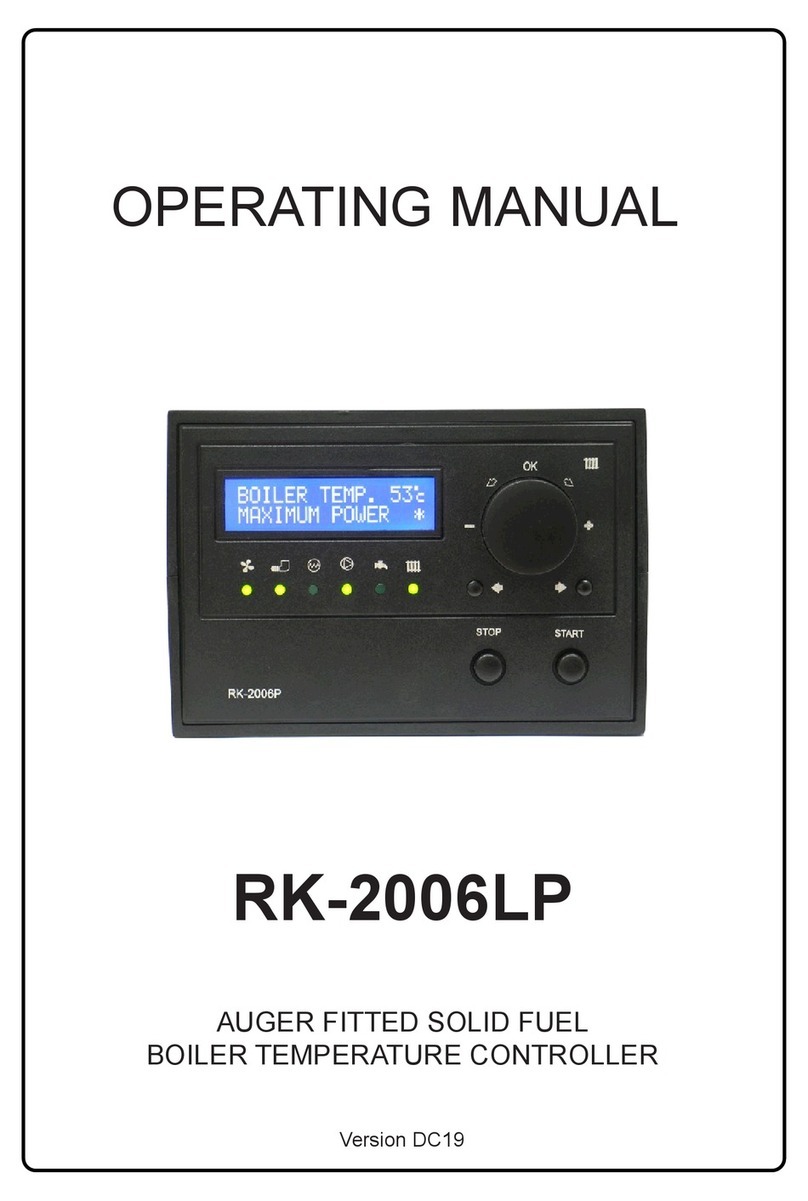Huber Pilot ONE User manual

CC®
V1.3.0
OperationManual
This documentaon does not contain a
device-specific technical appendix.
You can request the full operang instrucons from
info@huber-online.com. Please give the model designaon
and serial number of your temperature control unit
in your e-mail.


OPERATIONMANUAL
CC®
V1.3.0


OPERATION MANUAL
V1.3.0en/06.07.15//14.06 Liability for errors and misprints excluded. CC®
5
CC®
This operation manual is a translation of the original operation manual.
VALID FOR:
K1x, K2x
CC®-K6(s),
CC®-Kxx
Variostat®
Ministat® 125(w), 2xx(w)
CC®-4xx(w/wl)
CC®-5xx(w/wl)
CC®-8xx(w)
CC®-90x(w)

OPERATION MANUAL
CC® Liability for errors and misprints excluded. V1.3.0en/06.07.15//14.06
6
„Pilot ONE“
Layout of the “Home”
screen
K6 - Connections

OPERATION MANUAL
V1.3.0en/06.07.15//14.06 Liability for errors and misprints excluded. CC®
7
K1x and K2x -
connections

OPERATION MANUAL
CC® Liability for errors and misprints excluded. V1.3.0en/06.07.15//14.06
8
Table of contents
V1.3.0en/06.07.15//14.06
1Introduction 14
1.1 Details on the declaration of conformity....................................................... 14
1.2 Safety .......................................................................................................... 14
1.2.1 Symbols used for Safety Instructions..............................................................14
1.2.2 Proper operation.............................................................................................15
1.2.3 Reasonably foreseeable misuse......................................................................15
1.3 Responsible bodies and operators – Obligations and requirements............... 16
1.3.1 Obligations of the responsible body ...............................................................16
1.3.1.1 Temperature control unit with natural refrigerants (NR) ..........................16
1.3.1.2 Temperature control devices with fluorinated greenhouse
gases/refrigerants ......................................................................................17
1.3.2 Requirements for operators ...........................................................................18
1.3.3 Obligations of the operators...........................................................................18
1.4 General information..................................................................................... 18
1.4.1 Description of workstation .............................................................................18
1.4.2 Safety devices to DIN 12876 ...........................................................................18
1.4.2.1 Temperature control unit (without heater) with classic float switch.........19
1.4.2.2 Temperature control units (with heater) with electronic low level sensor19
1.4.3 Further protective devices ..............................................................................19
1.4.3.1 Power interruption.....................................................................................19
1.4.3.2 Alarm functions ..........................................................................................20
1.4.3.3 Warning messages......................................................................................20
1.5 Exemplary illustrations of the cooling variants.............................................. 20
1.5.1 Air cooling .......................................................................................................20
1.5.2 Water cooling..................................................................................................21
1.5.3 Consequence of inadequate energy dissipation.............................................21
2Commissioning 22
2.1 In-plant transport......................................................................................... 22
2.2 Unpacking.................................................................................................... 22
2.3 Ambient conditions...................................................................................... 22
2.4 Installation conditions.................................................................................. 24
2.5 Recommended temperature control and cooling water hoses ...................... 24
2.6 Wrench sizes and torques............................................................................. 25
2.7 Temperature control units with water cooling.............................................. 25
2.8 Temperature control unit with batch............................................................ 26
2.8.1 Operation as bath thermostat ........................................................................26
2.9 Preparations for operation ........................................................................... 27
2.9.1 Opening/closing valves ...................................................................................27
2.9.2 Cooling/heating baths: Connect the energizing lead......................................27
2.10 Connecting externally closed application...................................................... 28
2.10.1 Connecting an externally closed application ..................................................28
2.11 Connecting to the power supply ................................................................... 29
2.11.1 Connection using socket with protective earth (PE).......................................29
2.11.2 Connection via direct wiring ...........................................................................30
2.11.3 Cooling/heating baths: Power cable connection of K6...................................30
2.11.4 Cooling/heating baths: Power cable connection of the K1x and K2x .............31

OPERATION MANUAL
V1.3.0en/06.07.15//14.06 Liability for errors and misprints excluded. CC®
9
2.11.4.1 Utilization as a pure cooling bath (without hanger thermostat)................31
2.11.4.2 Utilization as a cooling/heating baths (with hanger thermostat) ..............32
3Function description 34
3.1 Function description of the temperature control unit ................................... 34
3.1.1 General functions............................................................................................34
3.1.2 Other functions...............................................................................................34
3.2 Information on the thermal fluids ................................................................ 35
3.2.1 Only valid for CC®-520w, CC®-525w, CC®-906w and cooling baths used in
continuous operation......................................................................................35
3.2.2 Information about Huber thermal fluids ........................................................36
3.3 To be noted when planning the test ............................................................. 36
3.4 “Pilot ONE®” controller ................................................................................ 37
3.4.1 Functional overview of “Pilot ONE®” ..............................................................37
3.5 Clock/event function.................................................................................... 39
3.5.1 Rechargeable accumulator .............................................................................39
3.5.2 Programmable event function ........................................................................40
3.5.2.1 Event function “Alarm clock event” ...........................................................40
3.5.2.2 Event function “Program event” ................................................................40
3.6 Operation via the touch screen..................................................................... 40
3.7 Display instruments ..................................................................................... 40
3.7.1 The touchscreen [88] ......................................................................................40
3.8 Control instruments ..................................................................................... 41
3.8.1 The touchbuttons............................................................................................41
3.8.2 The categories.................................................................................................41
3.8.3 The sub-categories..........................................................................................41
3.8.4 The dialogs ......................................................................................................41
3.9 Function examples ....................................................................................... 42
3.9.1 Display of software version.............................................................................42
3.9.2 Start & Stop.....................................................................................................42
3.9.3 Restore factory settings ..................................................................................43
3.9.3.1 Restore to factory settings without overtemperature protection .............46
3.9.3.2 Restore to factory settings including overtemperature protection ...........46
4Setup mode 47
4.1 Setup mode ................................................................................................. 47
4.1.1 Turning on the temperature control unit .......................................................47
4.1.2 Cooling/heating baths: Switching K6 on/off ...................................................47
4.1.2.1 Cooling/heating baths: Switching K6 on.....................................................47
4.1.2.2 Cooling/heating baths: Switching K6 off ....................................................48
4.1.3 Cooling/heating baths: Switching K1x and K2x on/off....................................48
4.1.3.1 Cooling/heating baths: Switching K1x and K2x on (without hanger
thermostat) ................................................................................................48
4.1.3.2 Cooling/heating baths: Switching K1x and K2x off (without hanger
thermostat) ................................................................................................48
4.1.3.3 Cooling/heating baths: Switching K1x and K2x on (with hanger thermostat)49
4.1.3.4 Cooling/heating baths: Switching K1x and K2x off (with hanger
thermostat) ................................................................................................49
4.1.4 Setting the overtemperature protection ........................................................50
4.1.4.1 General information on the overtemperature protection .........................50
4.1.4.2 Setting “OT limit: heating” .........................................................................50
4.1.4.3 Setting “OT expansion vessel”....................................................................51
4.1.4.4 Setting “Process Safety” .............................................................................51

OPERATION MANUAL
CC® Liability for errors and misprints excluded. V1.3.0en/06.07.15//14.06
10
4.1.4.5 Monitoring via “Display OT values”............................................................51
4.1.5 Testing overtemperature protection for functionality ...................................52
4.1.6 Adjusting the Delta T limiter ...........................................................................52
4.1.6.1 Changing the Delta T limiter.......................................................................52
4.2 The temperature control circuit.................................................................... 52
4.2.1 Select temperature control: Internal or process ............................................53
4.2.2 Temperature control to internal temperature ...............................................53
4.2.3 Temperature control to process temperature................................................54
4.2.4 Delta T limiter .................................................................................................54
4.2.5 Monitoring the Pt100 temperature sensors...................................................54
4.2.6 Optimum control parameters for optimum temperature control..................55
4.2.7 Sub-category: “Select auto/expert mode”......................................................55
4.2.8 Sub-category: “Configuration auto” ...............................................................55
4.2.8.1 Sub-category: “Find parameters”...............................................................55
4.2.8.2 Sub-category: “Control Dynamics”.............................................................57
4.2.8.3 Sub-category: “Fluid Properties”................................................................58
4.2.8.4 Sub-category: “Display parameters” ..........................................................59
4.2.9 Category: “Configuration manual”..................................................................60
4.2.9.1 Sub-category: “Change parameters”..........................................................60
4.2.9.2 Sub-category: “Display parameters” ..........................................................61
4.2.9.3 Sub-category: “Control structure”..............................................................61
4.2.10 Sub-category: “Reset parameters” .................................................................61
4.2.11 Sub-category: “Display parameters”...............................................................62
4.2.12 Einfrierschutz für Temperiergeräte (nicht gültig für CC-520w, CC-525w, CC-
906w und Kältebäder im Dauerbetrieb) .........................................................62
4.2.13 Setting the setpoint thresholds ......................................................................63
4.2.14 Setting the setpoint ........................................................................................64
4.3 Filling, venting, degassing and draining......................................................... 64
4.3.1 Filling, venting, degassing and draining the bath thermostat.........................64
4.3.1.1 Filling and venting the bath thermostat and the externally closed
application..................................................................................................64
4.3.1.2 Degassing of bath thermostat ....................................................................65
4.3.1.3 Draining the bath thermostat.....................................................................66
5Normal operation 67
5.1 Automatic operation .................................................................................... 67
5.1.1 Temperature control.......................................................................................67
5.1.1.1 Starting the temperature control process..................................................67
5.1.1.2 Ending the temperature control process ...................................................67
5.1.2 Temperature control via a created temperature control program ................68
5.1.2.1 Starting the temperature control program ................................................68
5.1.2.2 Ending/cancelling the temperature control program ................................68
5.2 Cooling/heating baths: Automatic operation of K1x and K2x (without hanger
thermostat).................................................................................................. 69
5.2.1 Cooling/heating baths: K1x and K2x thermoregulation..................................69
5.2.1.1 Cooling/heating baths: K1x and K2x start thermoregulation.....................69
5.2.1.2 Cooling/heating baths: K1x and K2x stop thermoregulation .....................69
6Interfaces and software update 70
6.1 Interfaces at the “Pilot ONE®” controller ...................................................... 70
6.1.1 10/100 Mbps Ethernet for RJ45 network sockets ..........................................70
6.1.2 USB-2.0 interface ............................................................................................71
6.1.2.1 USB-2.0 interface, host...............................................................................71

OPERATION MANUAL
V1.3.0en/06.07.15//14.06 Liability for errors and misprints excluded. CC®
11
6.1.2.2 USB-2.0 interface, device ...........................................................................71
6.2 Cooling/heating baths: Interfaces at the back............................................... 71
6.2.1 Activation connector.......................................................................................71
6.3 Cooling/heating baths: Interfaces on the hanger thermostat ........................ 71
6.3.1 Service interface .............................................................................................72
6.3.2 RS232 (option) / activation of cooling bath ....................................................72
6.3.3 Connection jack for Pt100 process control sensor .........................................72
6.4 Firmware update.......................................................................................... 72
7Service/maintenance 73
7.1 Messages from the temperature control unit ............................................... 73
7.2 Electrical fuse............................................................................................... 73
7.3 Replacing the “Pilot ONE®”........................................................................... 73
7.4 Maintenance................................................................................................ 74
7.4.1 Function check and visual inspection .............................................................74
7.4.2 Clean liquefier fins (air-cooled temperature control unit) .............................75
7.4.3 Clean hat-type strainer (dirt trap) (water-cooled temperature control unit).76
7.5 Thermal fluid inspection, replacement and circuit cleaning........................... 77
7.5.1 Thermal fluid inspection .................................................................................77
7.5.2 Cleaning the thermal fluid circuit....................................................................77
7.6 Cleaning the surfaces ................................................................................... 79
7.7 Inspect the mechanical seal.......................................................................... 79
7.8 Plug contacts................................................................................................ 79
7.9 Decontamination/repairs ............................................................................. 79
8Shutting down 80
8.1 Safety instructions and basic principles ........................................................ 80
8.2 Switch-off .................................................................................................... 81
8.3 Packing ........................................................................................................ 81
8.4 Shipping....................................................................................................... 81
8.5 Disposal ....................................................................................................... 82
8.6 Phone number and company address........................................................... 82
8.6.1 Telephone number: Customer Support ..........................................................82
8.6.2 Telephone number: Sales ...............................................................................82
8.6.3 Email adress: Customer Support.....................................................................82
8.6.4 Service/return adress......................................................................................82
8.7 Certificate of Compliance ............................................................................. 82
9Annex 83

OPERATION MANUAL
CC® Liability for errors and misprints excluded. V1.3.0en/06.07.15//14.06
12

OPERATION MANUAL
V1.3.0en/06.07.15//14.06 Liability for errors and misprints excluded. CC®
13
Foreword
Dear customer,
You have opted for a temperature control unit from Peter Huber Kältemaschinenbau GmbH. You
have made a good choice. Thank you for your confidence in our products.
Read through this operation manual carefully prior to start-up. Strictly follow all notes and safety in-
structions.
Proceed with transport, start-up, operation, maintenance, repairs, storage and disposal in accor-
dance with this operation manual.
Subject to proper operation, we offer a full warranty for your temperature control unit.

Introduction
OPERATION MANUAL Chapter 1
CC® Liability for errors and misprints excluded. V1.3.0en/06.07.15//14.06
14
1Introduction
1.1 Details on the declaration of conformity
The equipment complies with the basic health and safety requirements of the European Directives
listed below:
▪Machinery Directive 2006/42/EC
▪Low Voltage Directive 2006/95/EC
▪EMC Directive 2004/108/EC
1.2 Safety
1.2.1 Symbols used for Safety Instructions
Safety instructions are marked by the below combinations of pictograms and signal words. The
signal word describes the classification of the residual risk when disregarding the operation manual.
Denotes an immediate hazardous situation that will result in death or serious injuries.
Denotes a general hazardous situation that may result in death or serious injuries.
Denotes a hazardous situation that can result in injury.
Denotes a situation that can result in property material damage.
Denotes important notes and usable hints.
Notes in conjunction with Ex p cabinets.
The safety information in this operation manual is designed to protect the responsible body, opera-
tor and the equipment from damage. Safety information must always appear BEFORE instructions
and at the beginning of each chapter. You should be first informed about the residual risks due to
misuse before you begin an operation.
Safety information and
procedure

Introduction
Chapter 1 OPERATION MANUAL
V1.3.0en/06.07.15//14.06 Liability for errors and misprints excluded. CC®
15
1.2.2 Proper operation
Operating the temperature control unit in a potentially explosive area
DEATH THROUGH EXPLOSION
Do NOT install or start up the temperature control unit within an ATEX zone.
Improper use
SERIOUS INJURY AND PROPERTY DAMAGE
Store the operation manual where it is easy to access in close proximity to the temperature
control unit.
Only adequately qualified operators may work with the temperature control unit.
Operators must be trained before handling the temperature control unit.
Check that the operators have read and understood the operation manual.
Define precise responsibilities of the operators.
Personal protective equipment must be provided to the operators.
Be sure to follow the responsible body’s safety rules to protect life and limb and to limit dam-
ages!
Modifications to the temperature control unit by third-parties
DAMAGE TO THE TEMPERATURE CONTROL UNIT
Do not allow third parties to make technical modifications to the temperature control unit.
In case of any modification of the temperature control unit not approved by the manufacturer,
the CE declaration of conformity becomes invalid.
Only specialists trained by the manufacturer may carry out modifications, repairs or mainte-
nance work.
The following must be observed without fail:
Only use the temperature control unit in a fault-free condition!
Have start-up and repairs carried out only by specialists!
Do not ignore, bypass, dismantle or disconnect any safety devices!
The temperature control unit must not be used for any purposes other than temperature control in
accordance with the operation manual.
The temperature control unit is manufactured for industrial use. The temperature control unit main-
tains the temperature of certain applications, including glass or metal reactors or other expedient
items in laboratories and industry. Flow-through coolers and calibration baths must be used only in
combination with Huber temperature control units. Thermal fluids suitable for the overall system
are used. The chilling and heating capacity is provisioned at the pump connections or - where pre-
sent - in the tempering bath. The technical specification of the temperature control unit is given in
the data sheet (from page 83 in section »Annex«). The temperature control unit must be installed,
configured and operated according to the handling instructions in this operating manual. Failure to
comply with the operation manual is deemed improper use. The temperature control unit conforms
to state-of-the-art technology and the recognized safety regulations. Safety devices are built into
your temperature control unit.
1.2.3 Reasonably foreseeable misuse
Without an Ex p cabinet, the temperature control unit is NOT protected against explosion and
must NOT be installed or put into operation within an ATEX Zone. When operating the tempera-
ture control unit in conjunction with an Ex p cabinet, the information in the annex (section ATEX
operation) must be observed and followed. This annex is only provided for temperature control
units delivered with an Ex p cabinet. If this annex is missing, please immediately contact the Cus-
tomer Support of Peter Huber GmbH Kältemaschinenbau GmbH (the telephone number is provid-
ed on page 82 section »Phone number and company address«).
Use with medical devices (e.g. in Vitro diagnostic procedure) or for direct foodstuff temperature
control is NOT permissible.
The temperature control unit must NOT be used for any purposes other than temperature control in
accordance with the operation manual.

Introduction
OPERATION MANUAL Chapter 1
CC® Liability for errors and misprints excluded. V1.3.0en/06.07.15//14.06
16
The manufacturer accepts NO liability for damage caused by technical modifications to the temper-
ature control unit, improper handling or use of the temperature control unit if the operation manu-
al is not observed.
1.3 Responsible bodies and operators – Obligations and
requirements
1.3.1 Obligations of the responsible body
The operation manual is to be stored where it is easy to access in close proximity to the temperature
control unit. Only adequately qualified operators (e.g. chemists, CTA, physicists etc.) are permitted
to work with the temperature control unit. Operators must be trained before handling the tempera-
ture control unit. Check that the operators have read and understood the operation manual. Define
precise responsibilities of the operators. Personal protective equipment must be provided to the
operators.
1.3.1.1 Temperature control unit with natural refrigerants (NR)
Over 8 g refrigerant per m³ room air
DEATH OR SERIOUS INJURY DUE TO EXPLOSION
Observe the rating plate (amount of natural refrigerant contained) and the room size (maxi-
mum room concentration of natural refrigerant in case of leakage) when installing the temper-
ature control unit.
For temperature control units with more than 150 g natural refrigerant: A gas warning sensor
must be fitted and functioning.
The gas warning sensor must be calibrated and maintained at regular intervals (between 6 and
12 months).
The temperature control unit is not approved for operation in an ATEX zone.
Huber products with natural refrigerants work with numerous proven, safe and highly-sustainable
technologies. The relevant standards and regulations for temperature control units with natural
refrigerants contain a number of stipulations, the importance of complying with which is set out
below. Also observe on page 15 the section »Proper operation«.
Huber temperature control units are constructed to be permanently sealed and are carefully
checked for leak tightness. Temperature control units with more than 150 g natural refrigerant are
equipped with an additional gas warning sensor.
The fill quantity of your temperature control unit is stated on the data sheet (from page 83 in sec-
tion »Annex«) or on the rating plate on the rear of the temperature control unit. Observe page 22,
section »Ambient conditions«and page 24, section »Installation conditions«.
Class of
application
field
Application field Example of the installation
location
Max.
quantity of
refrigerant
AND
Max. permissible
quantity above
ground level (GL)
A General Publicly accessible area in a
public building
8 g/m3
ambient air
1.5 kg
B Monitored Laboratories 2.5 kg
C
Access only for
authorized
persons
Production equipment 10.0 kg
Temperature control units with more than 1 kg refrigerant must not be installed below ground level (GL).
Classifying the applica-
tion field

Introduction
Chapter 1 OPERATION MANUAL
V1.3.0en/06.07.15//14.06 Liability for errors and misprints excluded. CC®
17
Temperature control units with up to 150 g natural refrigerant
▪The temperature control unit has been constructed to the requirements of EU and EFTA coun-
tries.
▪Use the table as guidance for classifying the application field. Respect the max. refrigerant quanti-
ty stated therein.
Temperature control units with more than 150 g natural refrigerant
▪The temperature control unit has been constructed to the requirements of EU and EFTA coun-
tries.
▪Use the table as guidance for classifying the application field. Respect the max. refrigerant quanti-
ty or the permissible highest quantity above ground level (GL) stated therein.
▪For more information about the pre-installed gas detection sensor:
-The built-in gas detection sensor enables a safety shutdown at 20% of the lower explosive
limit via a power disconnect relay that is to be installed by the responsible body. The
temperature control unit is thus switched off early and safely in case of fault.
-A 24 V DC external power supply must be available for the pre-installed gas warning sen-
sor. The alarm output of the gas warning sensor uses a 4 - 20 mA signal. Please refer to the
data sheet of the gas warning sensor for further technical information. A separate pro-
cessing unit is available as an accessory for the control of the power disconnect relay. The
processing unit provides a potential-free switching contact and simultaneously provides
the power supply and analysis of the gas warning sensor. Both variants require the respon-
sible body to provide the necessary dimensioning and installation. Please refer to the data
sheet of the gas warning sensor for the technical information necessary for the installa-
tion. The alarm of the gas detection system can be connected to the responsible body’s
alarm control unit. The responsible body is responsible for this and for the other measures.
-The responsible body is responsible for the calibration of the gas detection sensor prior to
initial operation and the observance of calibration and maintenance intervals according to
the operating manual. We recommend to set calibration and maintenance intervals be-
tween 6 and 12 months if no information is provided. For increased safety requirements,
shorter intervals can be specified. On request we will recommend a specialist company to
carry out the calibration and maintenance.
1.3.1.2 Temperature control devices with fluorinated greenhouse gases/refrigerants
F gases regulation (EC) No. 517/2014 of April 16, 2014, on fluorinated greenhouse gases, and re-
pealing Regulation (EC) No. 842/2006.
These regulations deal with all systems that contain fluorinated refrigerants. The substances dealt
with in Directive (EC) No. 1005/2009 of the European Parliament and of the Council of 16 September
2009 that deplete the ozone layer are excluded (CFC/HCFC).
The directive regulates the reduction of the emission, utilization, recovery, and destruction of cer-
tain fluorinated greenhouse gases. It also regulates the identification and disposal of products and
devices that contain these gases. Since July 4, 2007, responsible bodies must check their stationary
refrigeration systems for leaks at regular intervals, and have any leaks eliminated immediately.
Directive (EC) No. 303/2008 contains stipulations on the training and certification of companies and
personnel that are permitted to execute the specified activities.
Obligations of the responsible bodies:
▪Directive (EC) No. 842/2006 already imposed a number of obligations upon responsible bodies
regarding certain fluorinated greenhouse gases. The new Ordinance on Fluorinated Greenhouse
Gases upholds these to a large extent. Some duties are added while others are designed different-
ly by this new ordinance. Please refer to the text of this ordinance for a complete overview of the
individual responsible bodies.
▪General obligation to reduce emissions.
▪Only certified companies may maintain, repair or decommission refrigeration systems. The re-
sponsible bodies must verify that these companies are certified.
▪Until 31.12.2016: Annual leak tests of stationary refrigeration systems by certified personnel
(such as service engineers of Peter Huber Kältemaschinenbau GmbH). Valid for a filling capacity of
6 kg to 30 kg of fluorinated greenhouse gases.

Introduction
OPERATION MANUAL Chapter 1
CC® Liability for errors and misprints excluded. V1.3.0en/06.07.15//14.06
18
▪As of 01.01.2017: Regular leak tests of stationary refrigeration systems by certified personnel
(such as service engineers of Peter Huber Kältemaschinenbau GmbH). The required test interval is
based on the refrigerant filling capacity and the type of refrigerant, converted to CO2equivalent.
▪Responsibility of responsible bodies to recover F-gases using certified personnel.
▪Obligatory documentation requirement in the refrigeration system’s operation manual, specifying
type and volume of refrigerant used or recovered. The responsible body must keep the records
for at least 5 years after their creation and present it to the responsible authority upon request.
▪Temperature control units with natural refrigerants (NR) are exempt from this Directive.
▪Please refer to the data sheet or name plate of your temperature control unit for the quantity and
type of refrigerant.
▪Additional information about the definition of the inspection interval can be found on our web-
site.
1.3.2 Requirements for operators
Work on the temperature control unit is reserved for appropriately qualified specialists, who have
been assigned and trained by the responsible body to do so. Operators must be at least 18 years old.
Under 18-year olds may operate the temperature control unit only under the supervision of a quali-
fied specialist. The operator is responsible vis-a-vis third-parties in the work area.
1.3.3 Obligations of the operators
Carefully read the operation manual before operating the temperature control unit. Please observe
the safety instructions. When operating the temperature control unit, wear appropriate personal
protective equipment (e.g. safety goggles, protective gloves, non-slip shoes).
1.4 General information
1.4.1 Description of workstation
The workstation is located at the control panel in front of the temperature control unit. The work-
station is determined by the customer's connected peripheries. Accordingly, it must be designed
safe by the responsible body. The workstation design also depends on the applicable requirements
of the German occupational health and safety regulations [BetrSichV] and the risk analysis for the
workstation.
1.4.2 Safety devices to DIN 12876
The rating of your temperature control unit is stated on the data sheet in the appendix.
Rating Temperature
control fluid Technical requirements Identificationd)
I Non-combustible a) Overheat protection c) NFL
II Combustible b) Adjustable overheat protection FL
III Combustible b) Adjustable overtemperature protection
and additional low level protection FL
a) Usually water; other fluids only if non-combustible even within the temperature range of an individual fault.
b) The temperature control media must have a combustion point of ≥ 65 °C; i.e. if ethanol is used, only supervised
operation is possible.
c) The overheat protection can, for instance, can be realized using a suitable fill level sensor or a suitable
temperature limiter.
d) Optional at the choice of the manufacturer.
Rating of laboratory
thermostats and
laboratory baths

Introduction
Chapter 1 OPERATION MANUAL
V1.3.0en/06.07.15//14.06 Liability for errors and misprints excluded. CC®
19
The workings of the overtemperature and low-level protection depend the type of temperature
control unit.
1.4.2.1 Temperature control unit (without heater) with classic float switch
Probably the most frequently found type today is the level monitor with a mechanical float switch.
In the bath vessel, a floating body, which is guided in a device, floats on the surface of the thermal
fluid. Depending on the level of the thermal fluid, the float device signals the electronics a state of
good (in case of sufficient filling) or a state of bad (in case of insufficient filling). You should check
the functionality of the float device from time to time. To do so and when in stand-by mode, press
the float body into the bath with a tool (e.g. a screwdriver). The electronics must report an alarm.
1.4.2.2 Temperature control units (with heater) with electronic low level sensor
Combined electronic low level and overtemperature protection
Some temperature control units (device dependent) feature an electronic overtemperature and low-
level protection. Instead of a mechanical float device, temperature sensors are employed on the
surface of the heating coils. These sensors monitor overtemperature at this potential ignition
source, thus ensuring that the controller regulates the heating coil temperatures regulates below
the critical temperature (combustion point of the thermal fluid). This does not apply to Chillers
where the level is capacitively determined). An appropriate message is output via the
>Touchscreen< [88] (see figure »“Pilot ONE”« on page 6).
There is no longer a need for mechanical tools to set the trigger values of the overtemperature
protection. It is replaced by a software engineering tool. The threshold value for the overtempera-
ture protection can be set only if a code, randomly generated by “Pilot ONE”, is entered correctly. As
with the mechanical tool, accidental settings are thus prevented.
1.4.3 Further protective devices
Emergency strategy – isolate the power supply!
Disconnect the temperature control unit from the power supply!
1.4.3.1 Power interruption
Following a power outage (or when switching on the temperature control unit), this function can be
used to determine how the temperature control unit is supposed to respond. This response can be
determined via “Pilot ONE”.
OFF/Standby (Default setting)
After turning the temperature control unit on, thermoregulation is started only after manual input.
Overview of the tem-
perature thresholds

Introduction
OPERATION MANUAL Chapter 1
CC® Liability for errors and misprints excluded. V1.3.0en/06.07.15//14.06
20
ON / Temperature control active
After turning on the temperature control unit, thermoregulation is always started. An INFO appears
for a few seconds. This makes it possible to suppress the automatic start.
Power Failure Auto
If temperature control is active during a power outage, the process will automatically continue after
the power outage.
1.4.3.2 Alarm functions
An alarm is a system state that signals unfavorable process conditions. The temperature control unit
can be programmed so that the plant operator is warned when defined limit values are exceeded.
The response of the temperature control unit to an alarm can be determined. Possible responses
are: Switch off temperature control or control temperature to a safe setpoint (2nd setpoint).
1.4.3.3 Warning messages
Warning messages contain a message about the irregularity of the temperature control unit. These
messages have no further consequences. The plant operator evaluates the relevance of the message
and takes action where necessary.
1.5 Exemplary illustrations of the cooling variants
1.5.1 Air cooling
Example: Air cooling
Air inlet
Other manuals for Pilot ONE
4
Table of contents
Other Huber Temperature Controllers manuals
Popular Temperature Controllers manuals by other brands
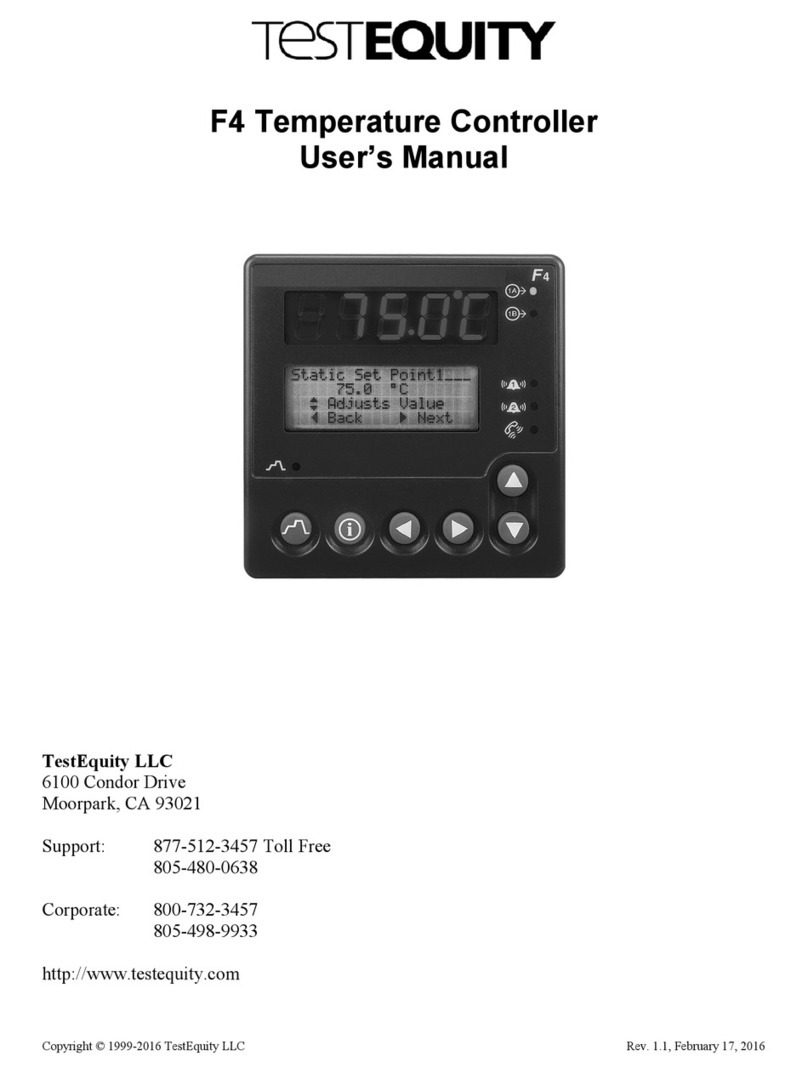
TestEquity
TestEquity F4 user manual

S+S Regeltechnik
S+S Regeltechnik THERMASGARD RTM 1-Modbus Operating and mounting instructions

KELD
KELD KLTX3 Specification and operating instructions
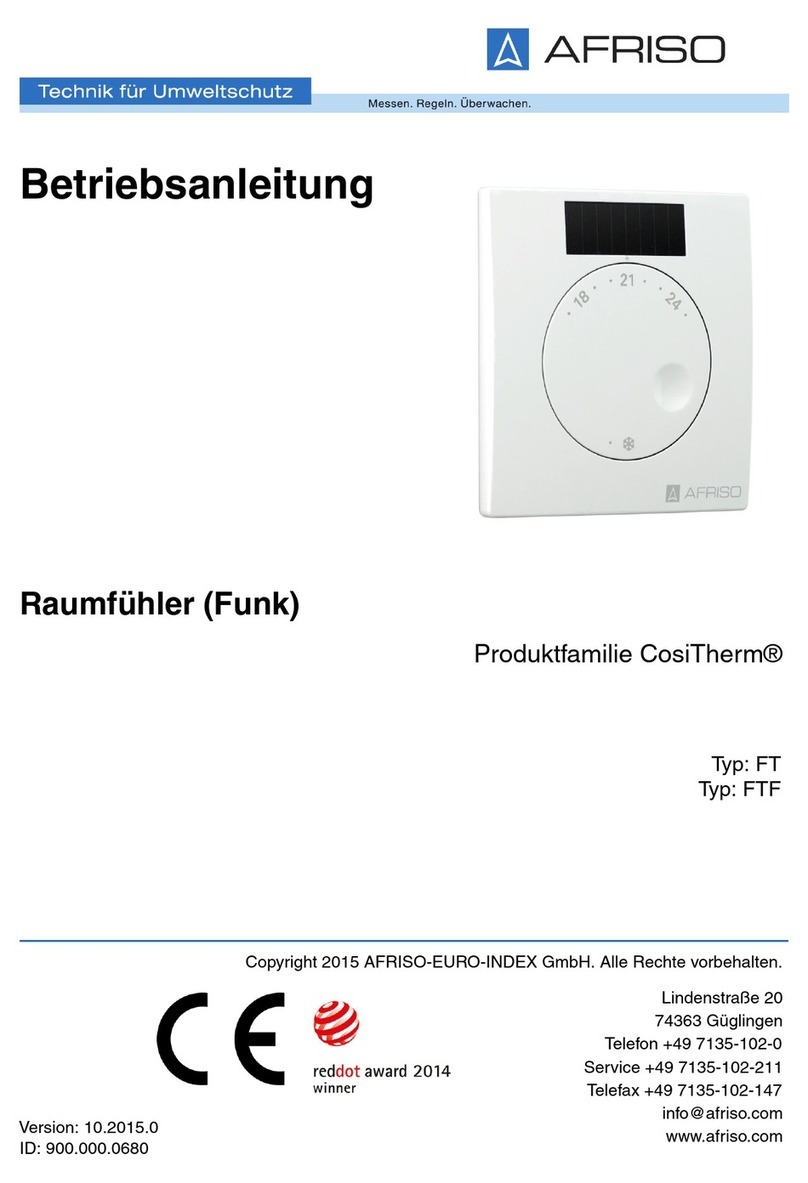
AFRISO
AFRISO CosiTherm FT operating instructions
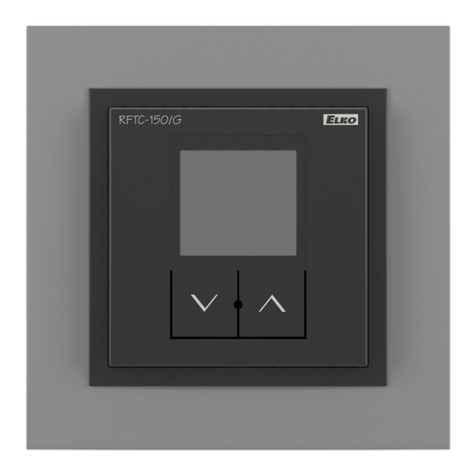
Elko
Elko iNELS RF Control RFTC-150/G manual
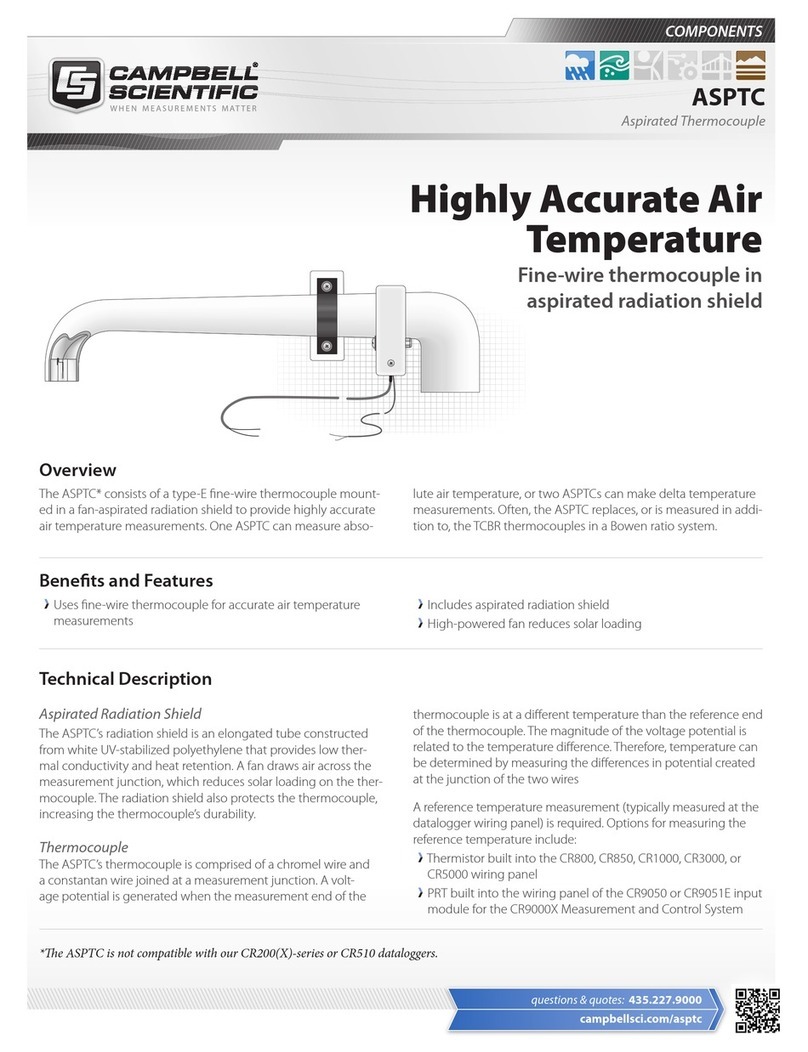
Campbell
Campbell ASPTC Information

